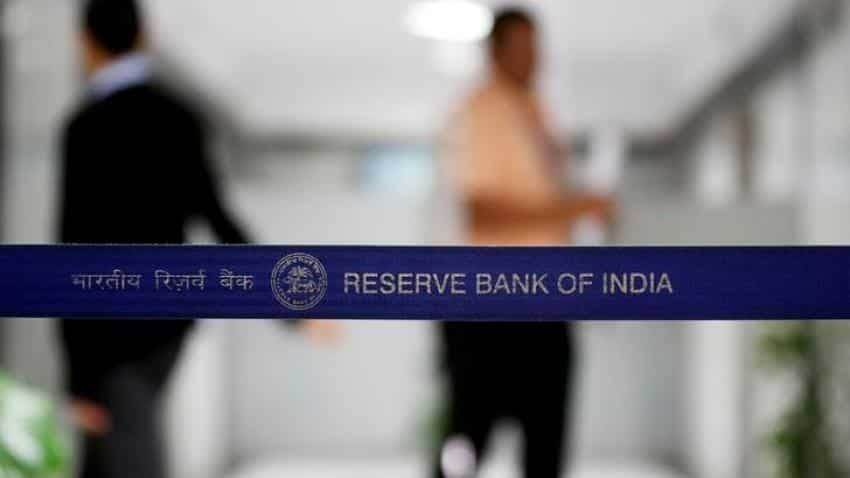RBI modifies average base rate for NBFC, MFIs
Average base rate of NBFCs-MFIs which stood near 10.09% from April – June 2014 quarter, came down to 9.45% on December 2015, further to 9.41% by end of December 2016 and then to 9.06% in September 2017.

The Reserve Bank of India (RBI) on Friday reduced the average base rate for NBFCs and MFIs to 8.96% effective from January 1, 2018.
In its notification, RBI said, “The applicable average base rate to be charged by Non-Banking Financial Company – Micro Finance Institutions (NBFC-MFIs) to their borrowers for the quarter beginning January 01, 2018 will be 8.96%.”
The reason behind providing an average base rate for NBFCs - MFIs is to bring flexibility in deciding their lending rates based on the prevailing market rates. It was mainly to tie loan rates of these institution with their cost of borrowings, the statement said.
It may be noted that RBI in 2014 had issued guidelines to NBFCs-MFIs regarding pricing of credit.
It had stated that it will, on the last working day of every quarter, advise the average of the base rates of the five largest commercial banks for the purpose of arriving at the interest rates to be charged by NBFC-MFIs to its borrowers in the ensuing quarter.
RBI on multiple occasions trimmed down average base rate for these institutions.
Average base rate of NBFCs-MFIs which stood near 10.09% from April – June 2014 quarter, came down to 9.45% on December 2015, further to 9.41% by end of December 2016 and then to 9.06% in September 2017.
Following the latest cut in NBFCs- MFIs base rate, these institutions will lower their lending interest rates. It will lower than compared to banking system which currently has lending interest rates from 8.30% to 11%.
According to Microfinance Institutions Network - the first RBI-appointed self-regulatory organisation (SRO) and an industry association, stated that NBFC-MFIs showcased 42% of the microfinance lending, followed by banks at 38% and SFBs at 14%.
Further, it said that aggregate gross loan portfolio of NBFC-MFIs stood at Rs 46,847 crore in FY17 – witnessing growth of 25% as compared to Rs 37,469 crore in FY15-16.
Kunal Shah and Prakhar Agarwal, analysts at Edelweiss Financial Services, said, "Over the past few years, NBFCs have benefitted immensely from falling interest rates (consequent tilt from banks to market borrowings)."
The duo further said, "Following turning interest rates table, their borrowing cost is likely to take a hit (incremental cost to rise, though repricing benefit may still flow on book funding cost). However, lending rates may not rise with ease due to intensifying competition (barring a few niche players/products)."
Get Latest Business News, Stock Market Updates and Videos; Check your tax outgo through Income Tax Calculator and save money through our Personal Finance coverage. Check Business Breaking News Live on Zee Business Twitter and Facebook. Subscribe on YouTube.
RECOMMENDED STORIES

Rs 3,500 Monthly SIP for 35 years vs Rs 35,000 Monthly SIP for 16 Years: Which can give you higher corpus in long term? See calculations

Small SIP, Big Impact: Rs 1,111 monthly SIP for 40 years, Rs 11,111 for 20 years or Rs 22,222 for 10 years, which do you think works best?
04:12 PM IST









 Electricity distribution companies continue to remain a burden on state finances: RBI
Electricity distribution companies continue to remain a burden on state finances: RBI RBI imposes penalties on IndusInd Bank and Manappuram Finance for non-compliance of certain norms
RBI imposes penalties on IndusInd Bank and Manappuram Finance for non-compliance of certain norms Forex reserves drop $2 billion to $652.86 billion
Forex reserves drop $2 billion to $652.86 billion RBI flags rising subsidies by states as incipient stress
RBI flags rising subsidies by states as incipient stress Wholesale inflation eases to 1.89% in November from 2.36% in previous month
Wholesale inflation eases to 1.89% in November from 2.36% in previous month